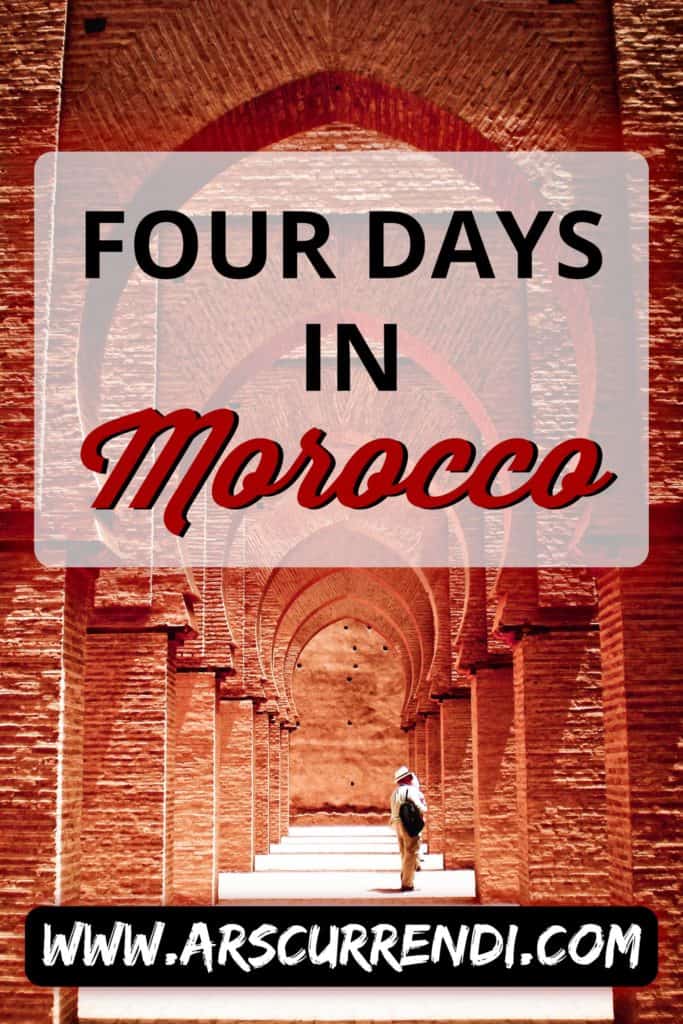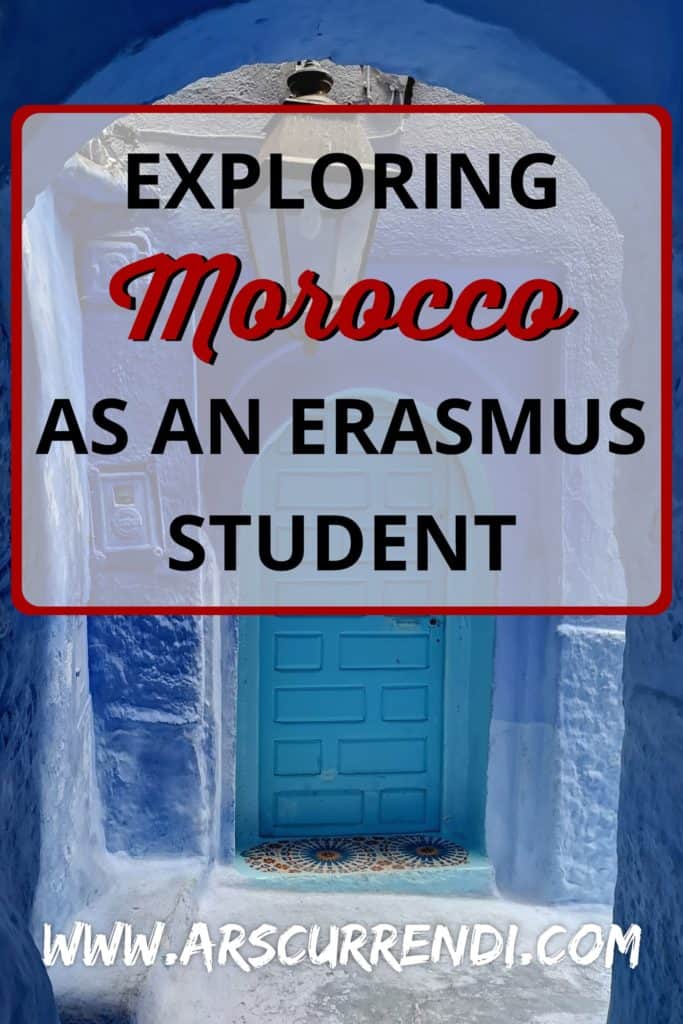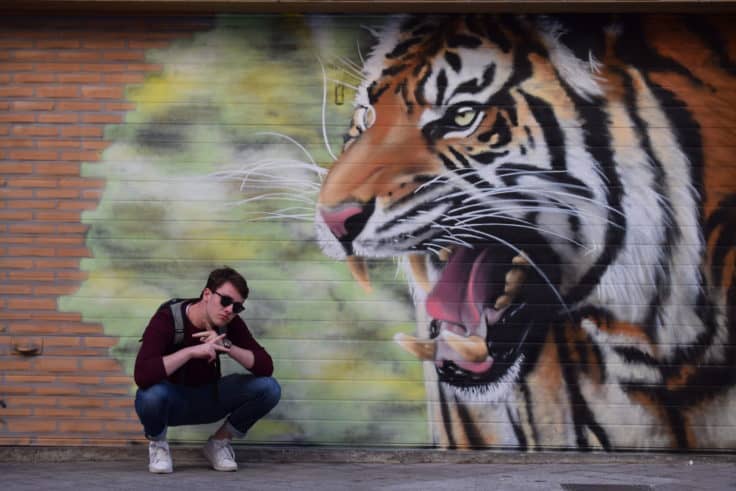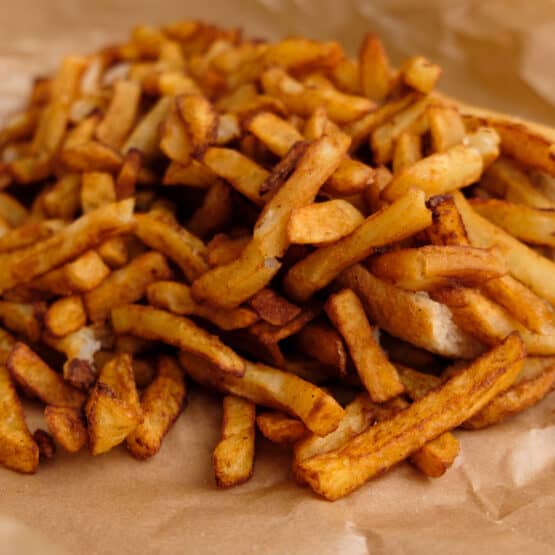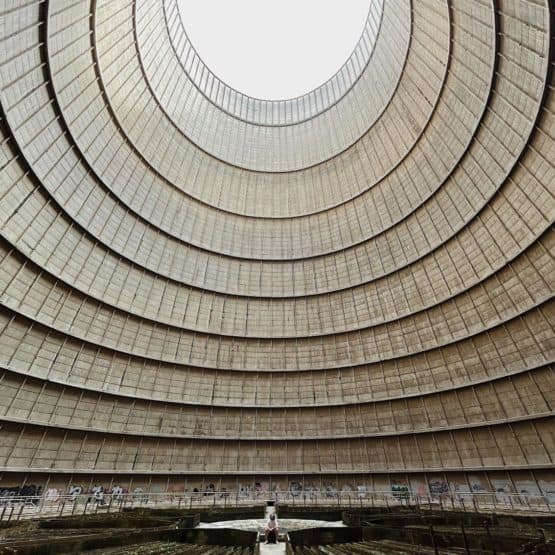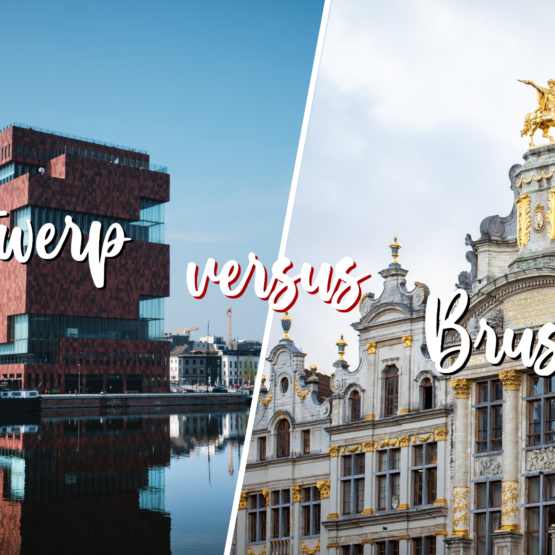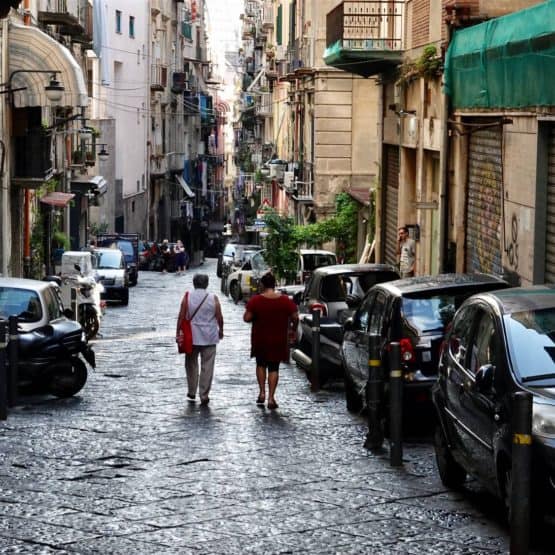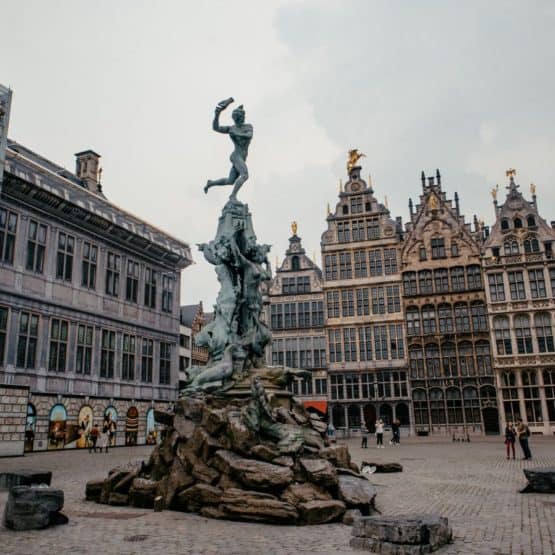So it finally happened. I traveled outside of Europe. Admittedly, Morocco is probably one of the closest countries to Europe you could visit, but it was still a wonderful, exciting adventure. Being in an exotic country with a culture that is vastly different from your own can really make you think about life.
Disclaimer: this post will have a LOT of pictures. And their quality will be terrible, for which I sincerely apologize. However, I bought myself a decent DSLR camera for Christmas, so expect some very nice pictures in the following blog posts.
Let’s get this show on the road.
The road to Morocco
You might think getting to Morocco is easy if you’re coming from Spain. On the one hand, you’d be right. But, of course, on the other hand, you’d be wrong.
Getting to Morocco was easy in the sense that we didn’t have to take a plane to get there and we didn’t have a lot of problems crossing the border. The hard part was trying to get some sleep on a bus between 10 pm and 6 am. Yes, I do realize that’s a very easy thing to do for some of the more seasoned travelers out there, but believe me, it’s harder than it sounds.
The trip I took was one that was organized by SET (Salamanca Erasmus Trips), a company that specializes in creating trips for Erasmus students in Salamanca. I must say, they did a great job putting it all together.
Traveling with a group of 60 students implied that we had to take the bus to a lot of places. Although the long bus rides were one of my least favourite parts of the trip, I do realize that there was little to no alternative for getting everyone around at a reasonable price.
After eight hours of suffering in silence on the bus, we arrived at Algeciras, where we were to take the ferry down to Ceuta.
Crossing the Mediterranean
So, we finally reached the south of Spain. Algeciras. This is where the passport administration started. Each and every one of us had to fill out two very non-official looking forms to be able to enter and leave Morocco when we were supposed to. Luckily, there were no big problems here. Nobody forgot any essential documents and we eventually managed to board the ferry.
The ferry ride went very smoothly (aside from some people almost getting seasick because of the boat’s swinging) and we disembarked in Ceuta, an autonomous city along the north coast of Morocco which is still a part of Spain. Thanks to this, it was much easier to deal with the ferry first and the passports and border control next.
Either way, there wasn’t really much to do in Ceuta. We had some free time to wander around, went to a vantage point to get some good looks at the entire city and we ate paella and drank sangria. It was a jolly old time.
Are we in Morocco yet?
Well, now we are. Our first stop after leaving Ceuta (and spending another two hours on the bus) was Tetouan. During the bus ride to Tetouan, we met our local guide. I’ve forgotten his name, because I’m writing this blog post a week after the trip (as usual), but for the sake of the story, we’ll call him Mohammed.
Mohammed was a very peculiar guide. His Spanish was very respectable for someone whose first language is Arabic (I know that because I heard him yell at someone for offering me drugs). He was a very kind man. He called out ‘familia’ when he wanted the group to get together and listen to his explanations. However, he did believe in some of the more extreme practices of Islam. For example, he believed that men were superior to women and that homosexuality was an illness.
When we heard him say these things in the bus, we were all a bit taken aback, but we realized that that was all this guy knew and that he’d be our guide for the next four days so we’d have to behave. I know it seems a bit backwards, but that’s the way it went down.
Ok. Now we’re 700 words into the blog post and you haven’t seen a single picture, even though I said that I’d show you a lot of pictures. Well, let’s see what we’ve got.
Tetouan
Spanish people refer to Tetouan as “la paloma blanca” – the white dove – because of the many white buildings in the city centre (Medina). We mostly strolled through the little alleys, passing street vendors and seeing some amazing architecture and some very remarkable things.
The houses in the Medina were very densely squished together and it seemed like they were stacked on top of one another in some parts of the city. It felt very fulfilling to see the way their life and culture differed from ours.
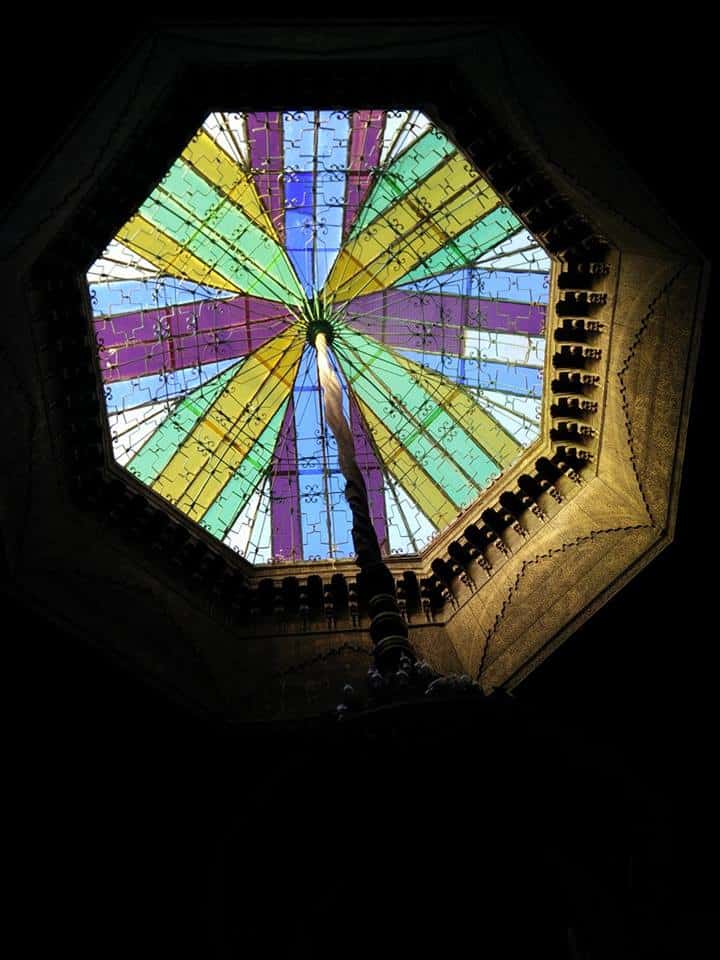
The first thing we visited was the Jewish neighbourhood, where the street was filled to the brim with people selling fruit, vegetables, nuts, spices and more.
(This ‘street market’ and more can also be seen in my Morocco travel video!)
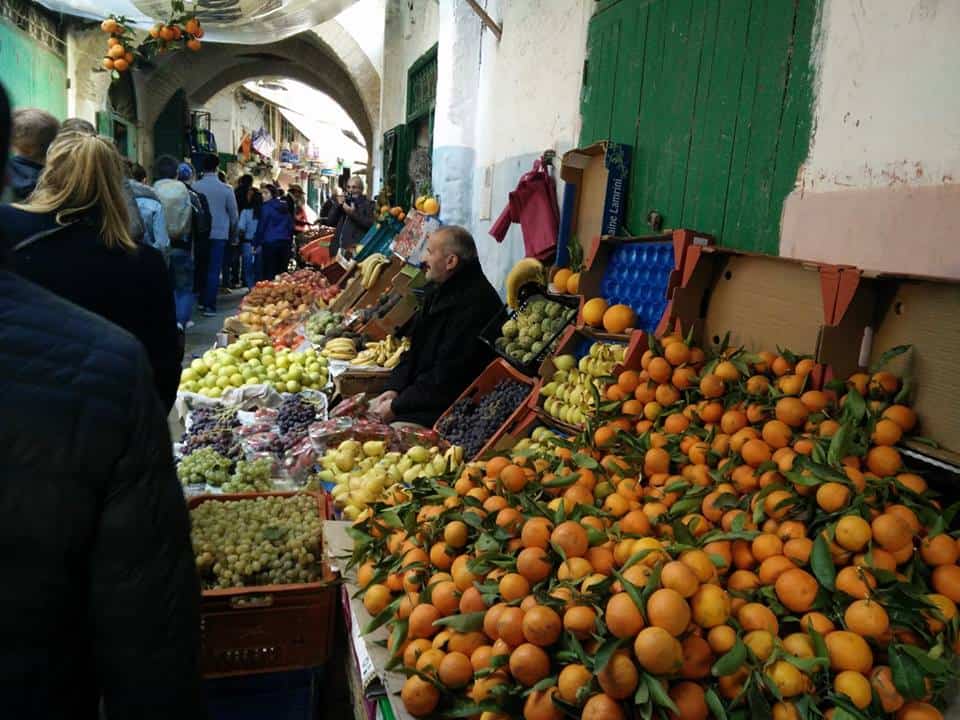
Of course, seeing as it was a Jewish neighbourhood in a big city, there were also some streets that had an abundance of shops that sold diamonds and other gems – but we were told that the prices were similar to those in Europe.
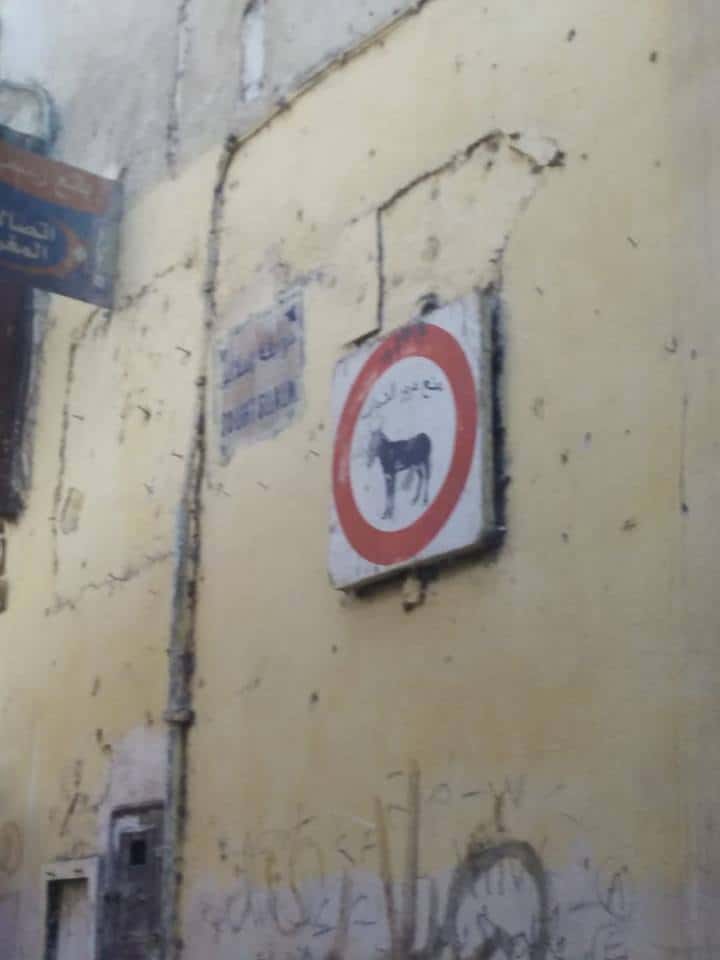
One of the funniest things we saw on this first day was this street sign, prohibiting donkeys and other cattle from entering a street. This felt very strange to us, seeing as donkeys don’t normally walk on the streets carrying goods in Europe.
Either way, we went back to the hotel after this walking tour through the Tetouan Medina, allocated roommates and we got some free time before dinner. After that, everyone went to bed satisfied and happy.
Leaving for Chefchaouen
Let me tell you. I had the most amazing night in Tetouan. I know people usually say that after they’ve gone out and had a lot of fun, but not me. I’m a lazy bum, so I thoroughly enjoyed having a good night’s sleep. I’m sure you can understand, given the fact that I’ve been sleeping in a pretty terrible bed for the last three months.
Anyway, moving on. We got up at 8, went for breakfast in the hotel restaurant, cleaned up, made our bags again and left for Chefchaouen at 9. This was the city I was most looking forward to, because after some research on the internet, I had concluded that it must be amazing.
Prepare yourself for an overload of blue-looking pictures, and don’t say I didn’t warn you.
Chefchaouen: out of the blue
As soon as you see one picture, you’ll realize why this city is a tourist attraction and why people often call it the Blue Pearl. I’ll start you off with what I think is the prettiest picture I took while I was there.
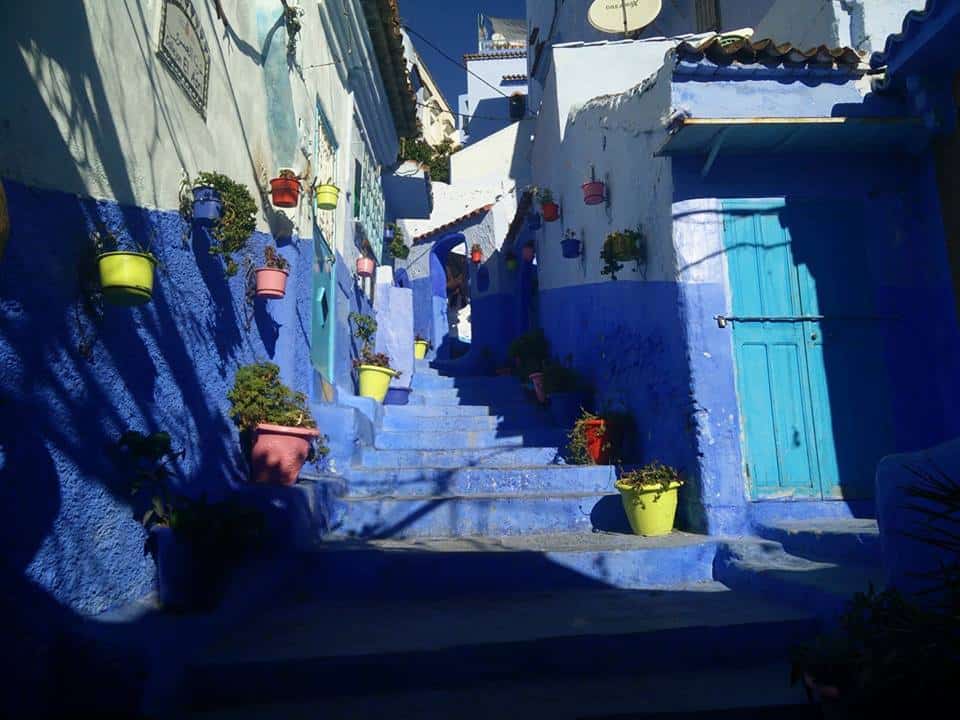
I mean. I know the actual quality is bad, but isn’t this magical?
Fun fact: nobody really knows why the walls of Chefchaouen are blue, but there are some theories. The most popular theory is also the most boring one: blue paint keeps the mosquitoes away. Other theories state that the blue came with the Jews when they were hiding from Hitler in the 1930s, and that blue symbolizes the sky and heaven and serves as a reminder to lead a spiritual life.
When I was expecting this visit to be the absolute highlight of our trip, I was not wrong. I loved walking through the blue streets, finding something new around every corner. The things people sold looked carefully crafted and actually high-quality.
As you can see in the photo gallery, there’s also a vantage point to see the entirety of the city. There’s an entire pathway carved out just to get people to it. Just head towards the mosque on the top of the hill and you’ll be golden.
Also, small bonus for animal lovers: there are literally hundreds of stray cats wandering around Chefchaouen. I’d be very impressed if you spent a day here and didn’t see at least one cat or kitten.
Our lunch in Chefchaouen consisted of tajine, a traditional Moroccan dish (which we ate in a traditional Moroccan restaurant). Hooray for traveling like a local!
After this, we were on our way to Fez, the last big city of our Moroccan trip.
Fez: losing yourself in a labyrinth of streets

First off, I’ll start by saying Fez and Fes are the exact same city. The reason why there are two different spellings is because the name of the city was transcribed from Arabic (فاس).
Right. Fez is the second-largest city in Morocco, second only to Casablanca (which boasts an impressive 3.3 million inhabitants). There’s a very lively debate about whether or not Fez is the most beautiful city of Morocco, competing for that spot with Marrakesh.
I must say, Fez did not impress me very much. It was a fun place to wander around and get lost in the 9,000 tiny streets, but the blue streets of Chefchaouen were a lot more impressive to me.
Of course, I’m not saying you shouldn’t go to Fez. It’s definitely worth a visit, and I thoroughly enjoyed visiting little shops where products were still carefully hand-made. We visited three shops where the owners/workers explained to us how they crafted various products.
What to do in Fez
We also visited the Chaouwara Tanneries, where top-quality leather is produced and coloured. When we got to the rooftop, where we had a vantage point to see how it all went down, we were all given a strain of mint, to keep the smell of the hides away. (I didn’t really understand the concept of this mint, and I didn’t hear the explanation. I ate the mint.)
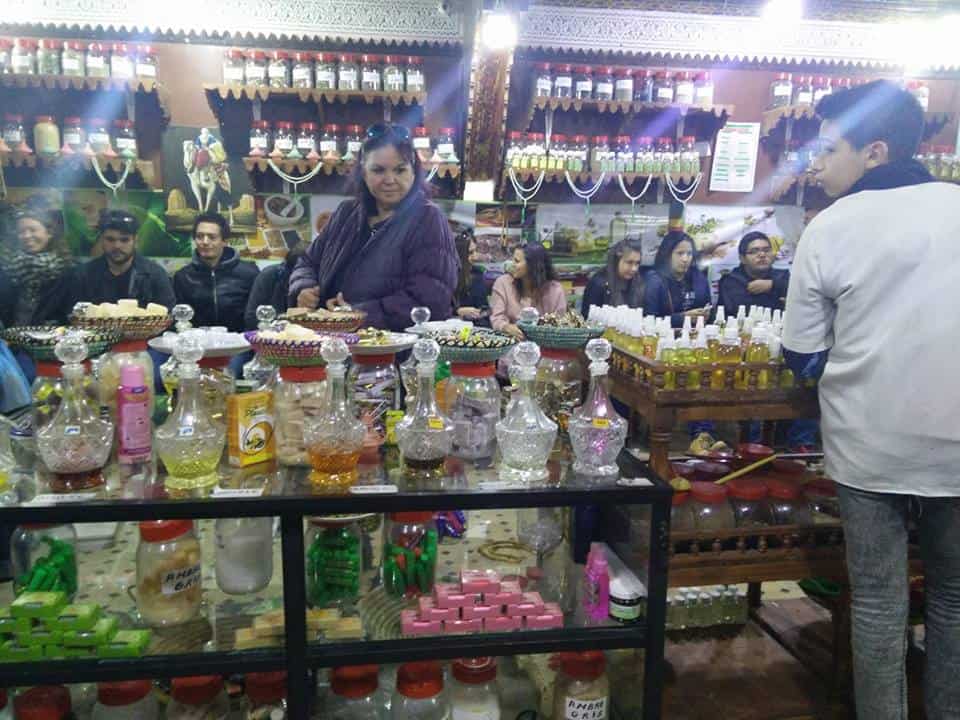
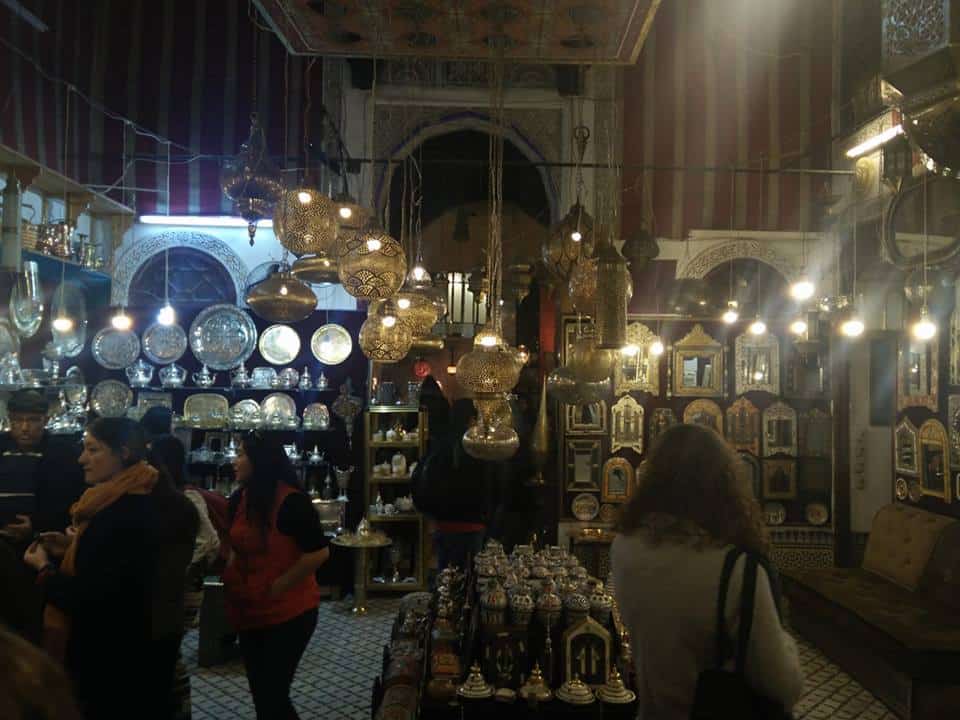
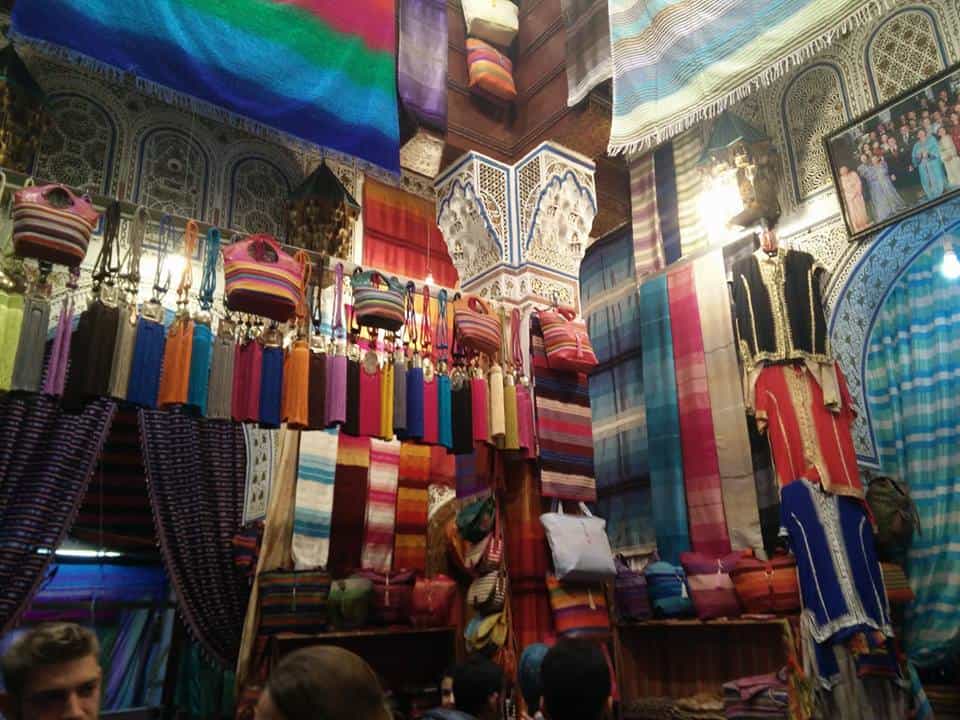
One of the main tourist attractions in Fez is the royal palace. That’s to say, the entrance to the royal palace. The grounds themselves aren’t actually open to the public, but the entryway is impressive enough.
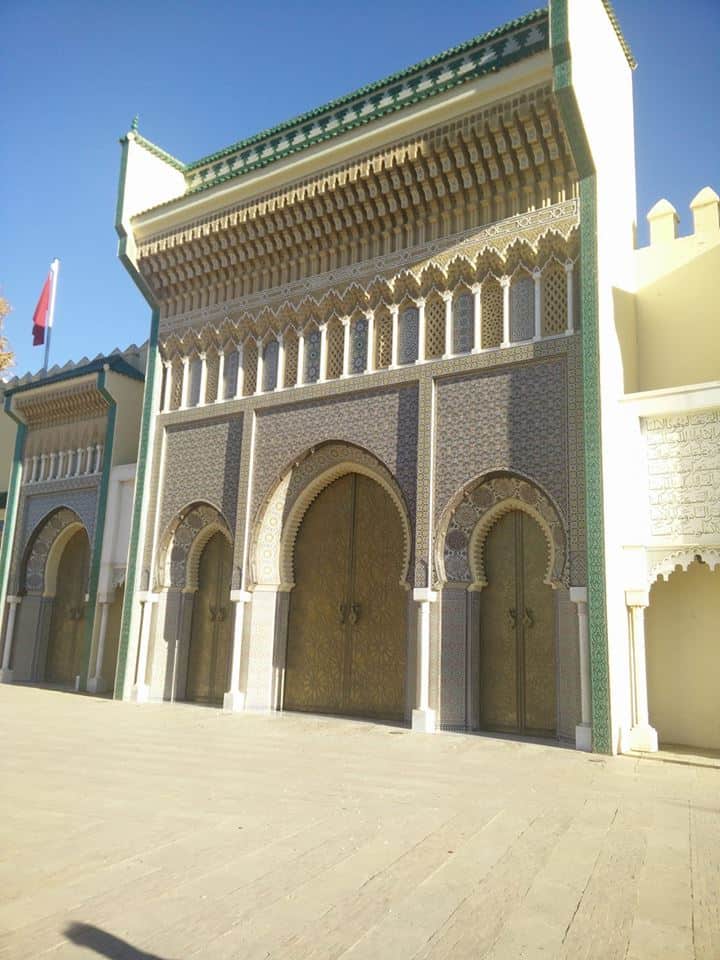
We got an afternoon off in this city, and we used it to wander around the Medina and discover the countless street markets. It felt like the entirety of the city centre was made up of people selling clothes, food, spices and other various things. It was an experience that you probably wouldn’t find anywhere in Belgium.
That night, we had the option to experience a traditional Moroccan dinner with a folklore show, involving a belly dancer, four men playing music, and a magician with very questionable entertainment skills.
After this show, we went back to the hotel and prepared for our last day of the adventure.
Asilah, camels and more bus rides
We left Fez at 8 am, to make sure that we still had some of our day left to experience Asilah. Well, that didn’t happen. Our bus was a little late and we arrived in Asilah later than we were supposed to, which meant that we had an important decision to make. Either we used our free time to explore the city, or we used it to have lunch. We decided to go for the latter, seeing that we’d spend the rest of the day – and the night – on the bus.
My friends and I went into the first decent-looking restaurant we encountered, and it turned out to be a good call. We all had tajine or couscous (both typical plates for Morocco) and it was very tasty. The only problem was that we didn’t all get our food at the same time.
After having dinner, we all met at the bus – which left a couple minutes late again, because how else could it have gone – and went on our way to the camel outpost.
Camels? In Morocco?
Well, yes. We didn’t go to the Sahara desert, but we did get to see camels and dromedaries (you know, camels with one bump).
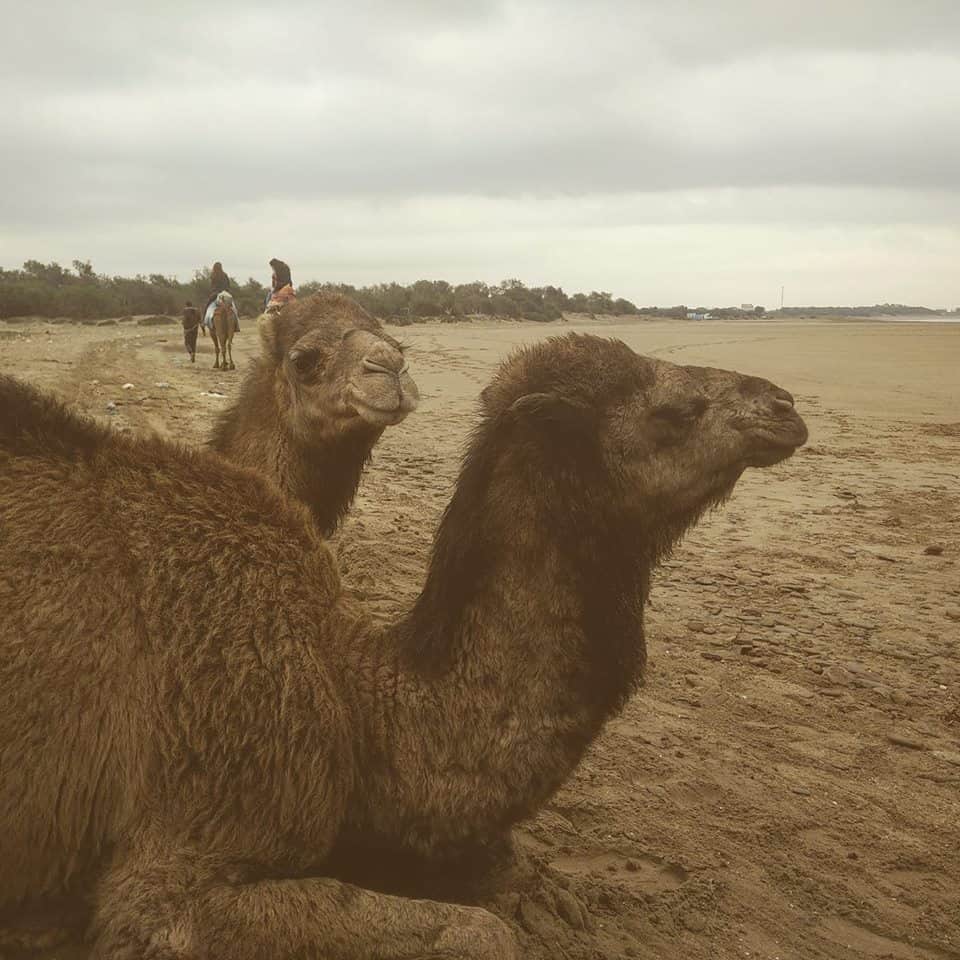
I actually got to ride a camel as well, but I’m not going to do that ever again. Not because it wasn’t fun (because it was), but because I could very clearly see and hear that the animals were in pain from constantly having to kneel down to carry people.
That being said, I’m glad I’ve had the experience of a camel carrying me around. You can see this in my travel video as well, by the way.
Heading back home
Sadly, this was the last stop of our adventures in Morocco. After our time at the camels, we hopped on the bus again, prepared for the long journey that was still ahead of us.
Luckily, everything from here on out went smoothly. I even got my first stamps in my passport, even though I was told I wouldn’t get them.
We took the ferry back to Spain, drove from Algeciras up to Salamanca and arrived around 6 am.
Conclusions
In conclusion, even though I was only there for a couple of days, I feel confident saying Morocco is a beautiful country you should definitely consider visiting sometime. Their culture is so vastly different from western countries that you’ll see some eye-opening things.
I’d consider adding the Sahara desert to your itinerary, though. I wasn’t there myself, but I’ve heard from my friends who were that it was very much worth it.
I hope you all enjoyed reading about my time in Morocco and I’d like to apologize for the long wait between my actual holiday and the release of this blog post.
Thanks for reading!
-S
PIN IT!
